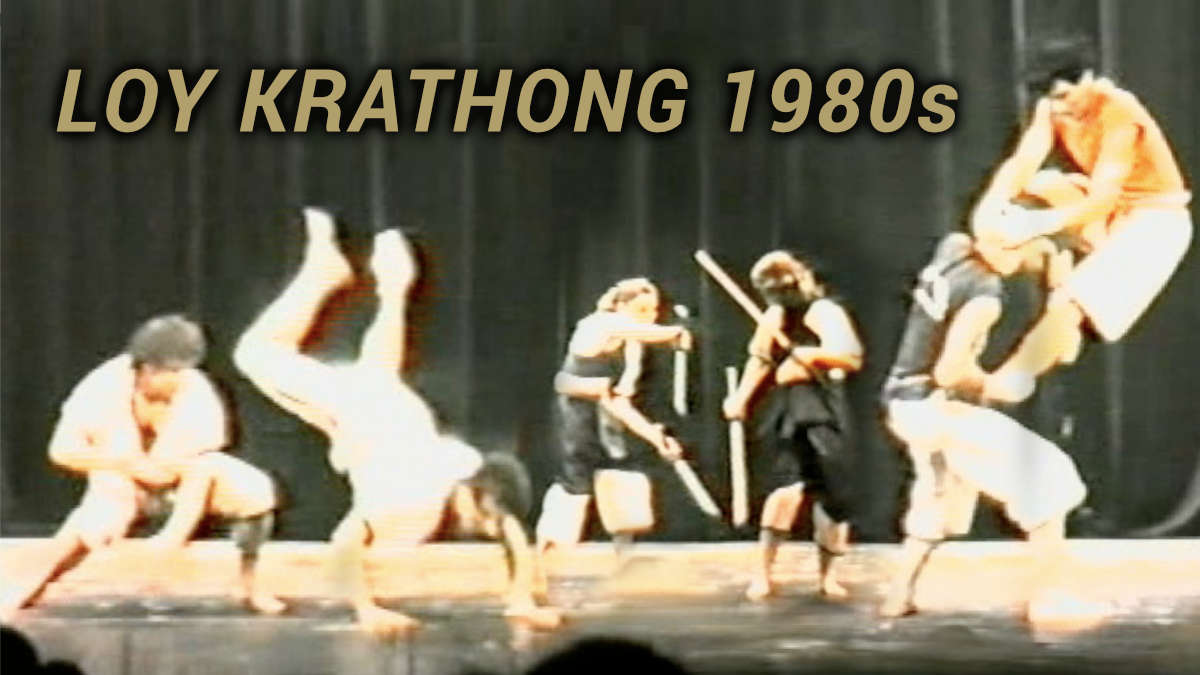What is show fighting?
In the understanding of Pahuyuth, a show fight (also known as show fighting) is a staged type of combat that serves the purpose of entertainment. The resulting limitations shape the technical scope of show fighting.
Content
Background
A show fight distinguishes itself from other types of combat by its underlying intention. The main purpose of a show fight is to entertain the audience, while other fighting styles are used to assert interests (melee combat), self-defense or competition (combat sports). For this reason, show fighting styles are also often characterized by their eye-catching and acrobatic movements, as well as their lack of realism.
Show fights can be found in various forms of entertainment, such as movies, television, social media, and live performances. Show fighting in the sense of, for example, form running is also a popular sport, which is held worldwide in various tournaments and competitions.
Although show fighting has some similarities with other fighting styles, there are also some important differences that distinguish it. These include:
- The main goal of the show fight is the entertainment and not to harm the opponent.
- Show fights are often choreographed in advance and not improvised.
- Show fights are often based on acrobatic and eye-catching movements.
- Show fights are not subject to the claim of realism and can contain elements of fantasy.
These intentions and limitations result in the technical curriculum of most types of show combat. Other types of combat such as melee combat, martial arts, martial arts but also self-defense can cross the border to show fighting by orienting themselves on the above criteria.
History (Europe)
Show fights are almost as old as the fight itself. Already in ancient Egyptian art there are pictorial representations in which fighters are admired by an audience during the fight. The Olympic Games of antiquity included the disciplines of wrestling and fistfighting as well as the combined show fight Pankration. In ancient Rome, gladiators then gained increasing importance. Some, such as Sergiolus, described by the Roman satirist Juvenal, were even freed from slavery.
In late antiquity and the early Middle Ages, kings and princes found their pleasure in the artful “killing attempt” with and without weapons. This was reflected in the legends of that time, such as the Edda and the Rolandslied.
In the early Middle Ages, the demonstrations of combat skills began to take on the character of a conversation. These demonstrations often took place on marketplaces or trade fairs and were primarily used to attract the attention of potential employers. Jarls and other warlords were always on the lookout for capable fighters, and these demonstrations allowed them to see potential mercenaries in action. The fighters not only had to prove their own skills, but also be entertaining enough to attract the attention of the audience. As a result, these demonstrations often became a fierce competition where the winners received valuable prizes. Over time, they developed into the public spectacles that we know today as medieval tournaments.
The medieval lance stabbing (Tjost) was a ritualized duel with show fighting elements, in which two knights rode on each other with the aim of defeating the other or at least breaking their lance on the shield or body of the opponent. Lance stabbing developed from a military exercise to a popular sport and aristocratic pastime. Historical show fights of Tjosten and tournaments are held annually all over the world.
In the late Middle Ages, the first fencing schools and thus also the first show fights emerged. These were competitions between students of a fencing master, in which they demonstrated their skills to both the master and the audience. The fights were usually fought without choreography, but with blunt swords. In some fencing books, e.g. by Meister Lecküchner and Talhoffer, special techniques are described that should only be shown in knock fencing, as they are too cumbersome for serious fencing and therefore too difficult to use. Fencing-related show fighting is still practiced today, but has evolved greatly compared to its origins. Today it is a spectator sport with its own rules and regulations. Nevertheless, it offers a fascinating insight into the history of fencing.
In this day and age, show fights can be found in a variety of contexts. In film and television, but also on social media, fight scenes are often shown that are choreographed in such a way that they look realistic, but are not actually intended as a combat action.
Stage fights are another common form of show fighting that usually uses show fighting swords or other theatrical props. In wrestling, show fights are often used to build suspense in an entertaining way or to create dramatic moments. Similarly, at many martial arts events, show fights are held to demonstrate the abilities of the participants. Finally, in medieval markets, show fights are often part of the historical re-enactment. In each of these cases, show fights serve a different purpose, but they all have the common goal of entertaining the audience.
History (Southeast Asia)
In order to earn an income in peacetime, Pahuyuth Free-Warriors held show fights with kicks and punches in front of audiences. For better visibility, they limited themselves to fighting while standing. In order not to run the risk of accidentally using gripping techniques or pressure point techniques in the heat of battle, the “opponents” bandaged their hands. In this way, the Muai was created, which is an offshoot of the Ling Lom and later, due to its effectiveness, was reintegrated into the Pahuyuth knowledge.
Due to the passion for betting of the Asian audience (see Panann Muai), the technical scope of the fighting was further reduced and the combat sports character, which was relevant for the betting business, was increasingly brought to the fore. From this line of development emerged the Thai national sport Muay Thai as well as the standing combat types of the neighboring countries (see Lethwei, Muay Lao, Bokator, Pradal Serey, etc.) as well as sports combat-oriented elements and techniques, which in turn have been incorporated into MMA or kickboxing, for example.
During the reign of King Rama II (1809-1826 AD), the imaginative imitation of stories about swordsmen (see DAAB) was developed into the show fighting type called Krabi Krabong (sabre and staff), which was performed in the sense of stage fencing and in plays for the entertainment of foreign guests at the royal court.
FAQ
What is show boxing?
A show boxing is a type of boxing match that is not a competition or a championship. Rather, it is a fight in which the boxers fight for the entertainment of the audience. The boxers can be equal or not, and the fight can be determined in advance
What is a show fight?
A show fight, in boxing for example, is a staged sports competition that is not part of a regular season or championship. Show fights are often used to promote a sport or collect donations for charity. They can also be a way for new or inexperienced athletes to gain experience.
How do show fights work?
Show fights in the sense of events are usually organized by organizers who bring together two opponents who are ready to compete against each other. The rules of combat are usually looser than those of a regular fight, and the outcome is often predetermined.
What is a show sword?
A show sword is a blunted sword or replica weapon for stage combat. Unlike other blunt swords, show swords are designed to look like real swords but do not endanger the safety of the performers. Show swords are occasionally used for training purposes and for fight choreographies in film, theater, and historical reenactments.
Recommended glossary entries



